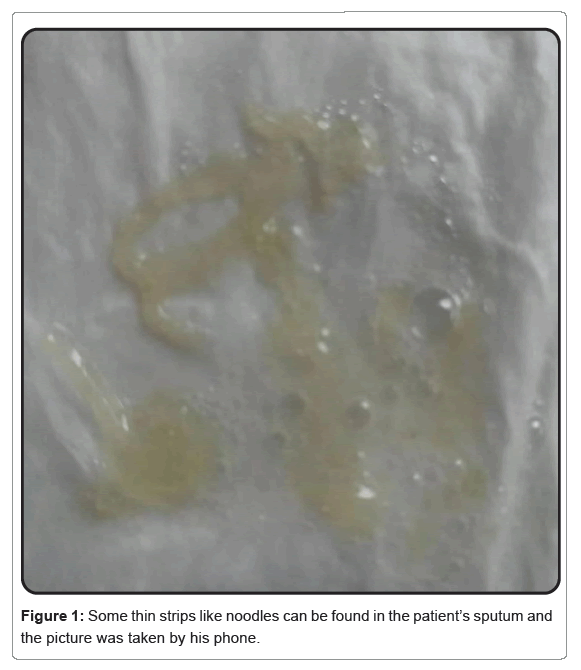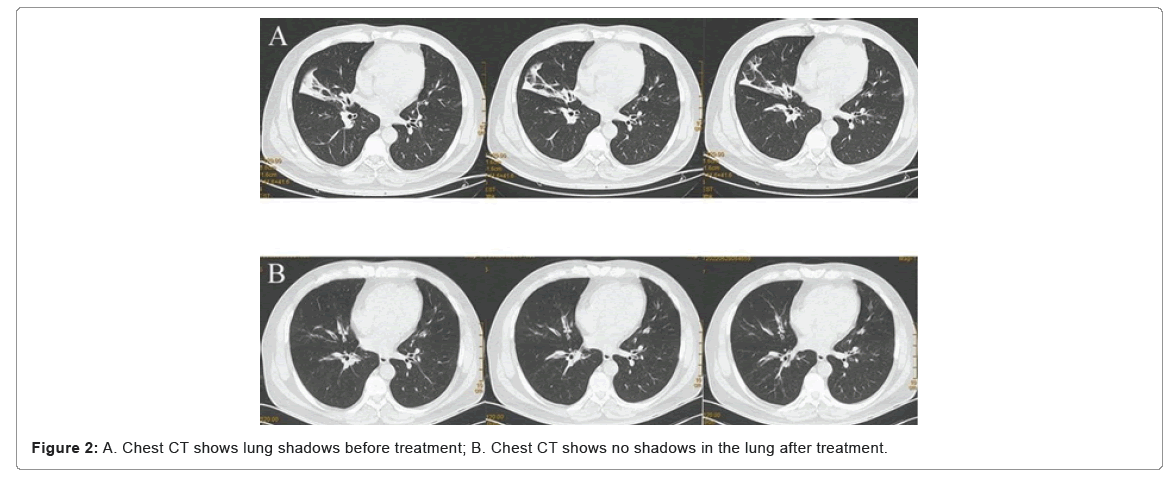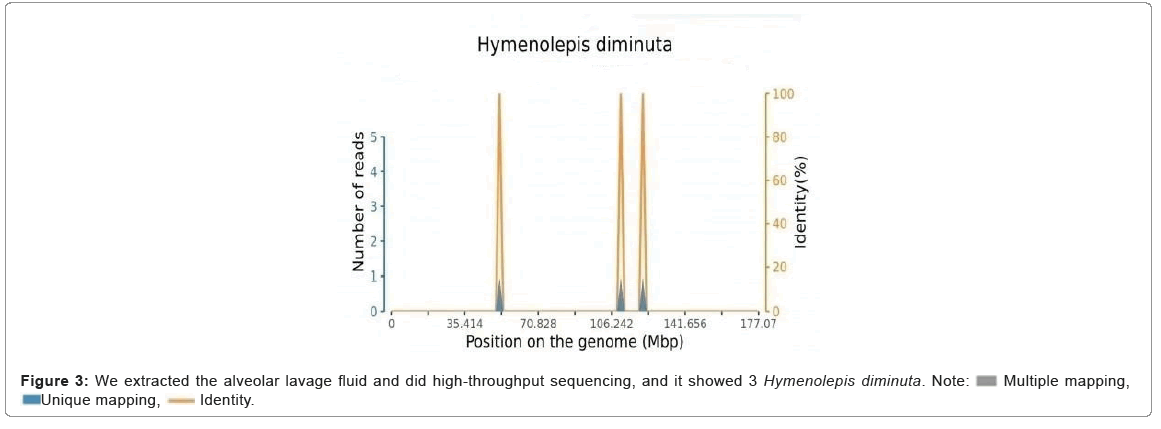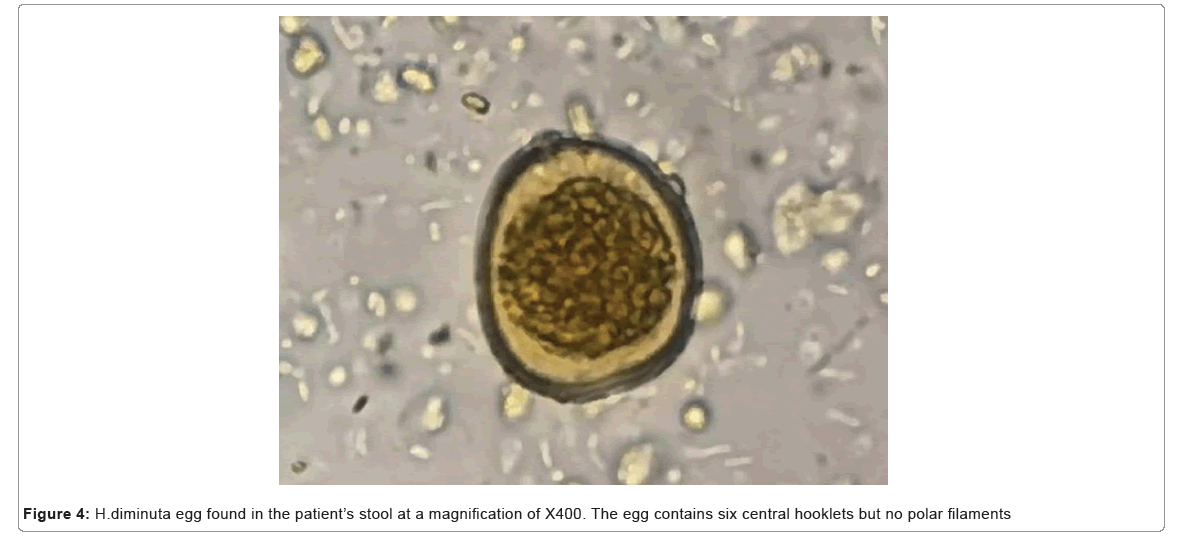Hymenolepis diminuta Infection in an Adult’s Lung: A Rare Case Report
Received: 05-Jul-2023 / Manuscript No. DPO-23-104863 / Editor assigned: 07-Jul-2023 / PreQC No. DPO-23-104863 (PQ) / Reviewed: 21-Jul-2023 / QC No. DPO-23-104863 / Revised: 28-Jul-2023 / Manuscript No. DPO-23-104863 / Accepted Date: 28-Jul-2023 / Published Date: 07-Aug-2023 DOI: 10.4172/2476-2024.8.S13.007 QI No. / DPO-23-104863
Abstract
Hymenolepis diminuta is a cosmopolitan parasite of rats and mice which is very rare in humans but has been reported from various areas of the world. We report a human case of Hymenolepis diminuta pulmonary infection in Jiangsu Province, China and it has never been reported in patient’s Lung before. In the process of the diagnosis, Next Generation Sequencing (NGS) technology helps a lot. The infection was treated with albendazole and showed clinical and parasitological cure.
Keywords: Hymenolepis diminuta; Pulmonary infection; High-throughput sequencing; Albendazole
Introduction
The zoonotic cestode Hymenolepis diminuta ( H. diminuta) is primarily a rat tapeworm, found in the small intestine of rodents, which are the definitive hosts [1-3].
H. diminuta infection in humans is rare, even in developing countries, typically occurring in isolated cases, such as case reports describing a single affected individual [1,4]. Human infection with H.diminuta most often occurs from accidental ingestion of stored-grain beetles [5]. Adult worms attach themselves to the mucosa of the small intestine of human, and it passes eggs in the stool of patient [6]. The parasite completes its lifecycle in two hosts. H. diminuta infection is reported to be more common among children than adults [7]. Infection is mainly asymptomatic, though rarely symptoms, such as itching, abdominal pain, and mild diarrhea, have been reported [6]. The main diagnosis of the infection is the presence of the eggs in the feces under microscope. The patient in our case is a 49 years old man and begins his illness by cough and asthma. To the best of our knowledge, this is the first documented case that the H. diminuta infection found primarily in human lung all over the world.
Case Presentation
In May 2022, a 49-year-old male presented to our hospital (Suqian Hospital of Nanjing Drum Tower Hospital Group) with a history of repeating cough, expectoration, and asthma in recent months. In particular, some thin strips like noodles can be found in his sputum (Figure 1). On examination, the patient weighed 75 kg and was 174 cm in height, no abdominal pain, no vomiting, and no loss of appetite. Digestive system, cardiovascular, and central nervous systems were found to be normal. No other family member had similar complaints.
Chest CT shows lung shadows (Figures 2A and 2B), we considered the possibility of some kind of pathogen infection. We extracted the alveolar lavage fluid and did not find some conventional infection, then we did high-throughput sequencing, also known as Next-Generation Sequencing technology (NGS). The NGS result is Hymenolepis diminuta infection (Figure 3). Then, from the patient’s stool sample, we identified a spherical, thick-shelled, yellow coloured egg measuring 70 µm in diameter, with six central hooklets without any polar filaments (Figure 4).
The tablet albendazole was prescribed of 400 mg per day for 7 days [5]. The patient tolerated the medication well without any adverse drug reactions. Following drug therapy, after 15 days two consecutive stool and sputum samples were received and subjected to microscopic examination. Both were found to be negative for ova and cysts. Chest CT shows no shadows in the lung (Figure 2B).
Results and Discussion
H. diminuta has a ubiquitous distribution worldwide, however, it is rarely found in humans [8]. The definitive host as well as natural reservoirs of H. diminuta are rodents, i.e., rats and mice [9]. Children and adults from poor socioeconomic group are more prone to infection because of unhygienic practices [10]. Ingestion of the contaminated grains and cereals with infected insects is the main source of infestation. The demonstration of H. diminuta eggs in the stool is the essential diagnostic tool. Most of the time this condition may be asymptomatic; however, vague abdominal pain and extraintestinal manifestations such as pruritus, irritation, and eosinophilia may be present [11,12]. Given that most cases of H. diminuta infection have been reported in children, it is most likely that children acquire the infection through the ingestion of insects, whereas infection in adults probably occurs via the incidental ingestion of food contaminated with infected insects or the willing ingestion of edible insects, either as part of traditional practices or due to the increased demand for new food sources or exotic dishes. Further studies are needed to identify risk factors for human hymenolepiasis caused by H. diminuta [7].
Here, we have reported an uncommonly encountered parasite H. diminuta especially in a prime-age man. There are few cases of human infections have been reported from china. It was the first report of human pulmonary infection of H. diminuta, based on our knowledge. Majority of the cases are asymptomatic, and the prevalence of infection in the community may be underestimated. Our case begins illness by cough and asthma. This case atypically presented as respiratory symptom and, as far as we know, respiratory symptom has never been reported as a clinical feature of symptomatic H. diminuta infection. Therefore, more effort should be put into improving our knowledge of the epidemiology and transmission routes of this uncommon human infection.
Conclusion
What’s more, we make a definite diagnosis for this case by extracting the alveolar lavage fluid through NGS. Due to the atypically present age, area, and other atypical factors. We do not associate the case with parasitization. But NGS technology helps us make a definite diagnosis rapidly, with no delay and avoid misdiagnoses. It suggests that new technology can often surprise you in a big way.
Children who have been infected with H. diminuta are most likely to do so by eating insects, whereas adults who become infected are more likely to do so voluntarily or incidentally by eating food that has been contaminated by infected insects or by engaging in traditional practises that involve eating insects, or because there is a greater demand for new food sources or exotic dishes.
Here we report a rare case of pulmonary infestation of Hymenolepis diminuta which if not diagnosed and treated properly can lead to transmission. Sanitation and hygiene are essential for prevention of the infection. This study reports the use of NGS technology to accurately diagnose and identify the parasite in addition to the stool microscopic examination for the presence of the ova and cysts. The patient could be effectively treated using albendazole. The study emphasizes on further exploration of transmission and epidemiology of this uncommon human infection.
Declarations
Ethical approval
The enrolled patient has been explained in detail about the study and signed informed consent.
Competing interests
The authors declare no conflict of interest.
Authors' contributions
Jingjie Liu and Kang Tian wrote the main manuscript text and Jingjie Liu, Kang Tian and Wangyuan Sun prepared figures. All authors reviewed the manuscript.
Funding
Not applicable.
Availability of data and materials
Not applicable
References
- Kalaivani R, Nandhini L, Seetha KS (2014). Hymenolepis diminuta infection in a school-going child: A rare case report. Australas Med J 7:379-381.
[Crossref] [Google scholar] [PubMed]
- Makki M, Shahbazi F, Teimoori S, Rokni M, Abaei M, et al. (2011) Establishment of Hymenolepis diminuta life cycle to provide parasite mass production. Iran J Parasitol 6:60-63.
[Google scholar] [PubMed]
- Sulima A, Bien J, Savijoki K, Nareaho A, Salamatin R, et al. (2017) Identification of immunogenic proteins of the cysticercoid of Hymenolepis diminuta. Parasit Vectors 10:577.
[Crossref] [Google scholar] [PubMed]
- Tena D, Perez Simon M, Gimeno C, Perez Pomata MT, Illescas S, et al. (1998) Human infection with Hymenolepis diminuta: case report from Spain. J Clin Microbiol 36:2375-2376.
[Crossref] [Google scholar] [PubMed]
- Sethi S, Gupta S, Jayshree M, Mewara A, Khurana S (2018). Hymenolepis diminuta infection in a child from urban area of North India: A rare case report. Trop Parasitol 8:118-120.
[Crossref] [Google scholar] [PubMed]
- Mane P, Sangwan J (2016). Hymenolepis diminuta infection in a young boy from rural part of Northern India. J Family Med Prim Care 5:166-167.
[Crossref] [Google scholar] [PubMed]
- Panti-May JA, Rodriguez-Vivas RI, Garcia-Prieto L, Servian A, Costa F (2020). Worldwide overview of human infections with Hymenolepis diminuta. Parasitol Res 119:1997-2004.
[Crossref] [Google scholar] [PubMed]
- Patamia I, Cappello E, Castellano-Chiodo D, Greco F, Nigro L, et al. (2010) A human case of Hymenolepis diminuta in a child from eastern Sicily. Korean J Parasitol 48:167-169.
[Crossref] [Google scholar] [PubMed]
- Kolodziej P, Rzymowska J, Stepien-Rukasz H, Lorencowicz R, Lucinska M, et al. (2014) Analysis of a child infected with Hymenolepis diminuta in Poland. Ann Agric Environ Med 21:510-511.
[Crossref] [Google scholar] [PubMed]
- Tiwari S, Karuna T, Rautaraya B (2014). hymenolepis diminuta infection in a child from a rural area: A rare case report. J Lab Physicians 6:58-59.
[Crossref] [Google scholar] [PubMed]
- Karuna T, Khadanga S (2013). A case of Hymenolepis diminuta in a young male from Odisha. Trop Parasitol 3:145-147.
[Crossref] [Google scholar] [PubMed]
- Singh C, Sharma B, Aneja A, Lal SB, Khurana S (2020). Coinfection with Hymenolepis nana and Hymenolepis diminuta infection in a child from North India: A rare case report. Trop Parasitol 10:56-58.
[Crossref] [Google scholar] [PubMed]
Citation: Li J, Tian K, Sun W, Shi B (2023) Hymenolepis diminuta Infection in an Adult’s Lung: A Rare Case Report. Diagnos Pathol Open S13:007. DOI: 10.4172/2476-2024.8.S13.007
Copyright: © 2023 Liu J, et al. This is an open-access article distributed under the terms of the Creative Commons Attribution License, which permits unrestricted use, distribution, and reproduction in any medium, provided the original author and source are credited.
Select your language of interest to view the total content in your interested language
Share This Article
Open Access Journals
Article Tools
Article Usage
- Total views: 1539
- [From(publication date): 0-2023 - Nov 15, 2025]
- Breakdown by view type
- HTML page views: 1211
- PDF downloads: 328






